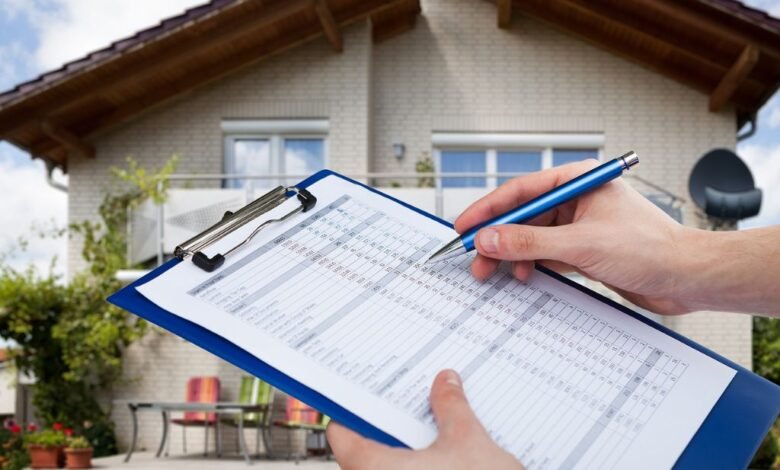Everything You Need to Know About Radon Inspection

Introduction
Radon, a colorless and odorless radioactive gas, is a serious health concern that can seep into homes through the ground. As a leading cause of lung cancer, second only to smoking, radon poses a significant threat to homeowners. In this comprehensive guide, we explore everything you need to know about radon inspection, from understanding the risks and detection methods to the importance of mitigation.
Understanding Radon
1. What is Radon?
Radon is a naturally occurring gas produced by the decay of uranium in soil, rock, and water. It can enter homes through cracks and openings in the foundation, leading to elevated concentrations that can be harmful when inhaled.
2. Health Risks Associated with Radon Exposure
Prolonged exposure to elevated levels of radon increases the risk of lung cancer. Radon is estimated to be responsible for thousands of lung cancer deaths each year, making it crucial for homeowners to be aware of the radon levels in their homes.
The Importance of Radon Inspection
1. Early Detection for Health and Safety
Radon is a silent threat, and without proper testing, homeowners may be unaware of its presence. Radon inspection serves as a critical tool for early detection, allowing homeowners to take necessary steps to mitigate the risk and protect their health.
2. Real Estate Transactions and Radon Testing
Radon testing Virginia has become an integral part of real estate transactions. Many homebuyers include radon testing as a contingency in their offers, emphasizing the importance of knowing the radon levels before committing to a property purchase.
Radon Detection Methods
1. Short-Term vs. Long-Term Testing
Radon testing can be conducted through short-term or long-term methods. Short-term tests provide a snapshot of radon levels over a few days, while long-term tests offer a more comprehensive assessment over several months. The choice between the two depends on factors such as the urgency of the situation and the homeowner’s preferences.
2. Passive and Active Testing Devices
Radon testing devices can be passive or active. Passive devices do not require power and include charcoal canisters and alpha-track detectors. Active devices, such as continuous radon monitors, need power to function and provide real-time data on radon levels.
Conducting Radon Inspections
1. DIY Radon Testing Kits
Homeowners can purchase radon testing kits for DIY testing. These kits are readily available and often include simple instructions for placement and retrieval. However, it’s crucial to follow the instructions carefully to ensure accurate results.
2. Professional Radon Inspections
For a more comprehensive assessment, hiring a certified radon professional is recommended. Certified radon inspectors have the expertise and specialized equipment to conduct thorough inspections, providing accurate data and offering mitigation recommendations if necessary.
Interpreting Radon Test Results
1. Understanding Action Levels
Radon levels are measured in picocuries per liter (pCi/L). The Environmental Protection Agency (EPA) has established action levels, and if test results indicate radon levels at or above these levels, action is recommended to reduce exposure.
2. Next Steps After Elevated Radon Levels
If test results reveal elevated radon levels, it’s essential to take immediate action. This may involve radon mitigation systems, which are designed to reduce radon concentrations within a home and prevent its entry.
Radon Mitigation Techniques
1. Sub-Slab Depressurization
Sub-slab depressurization is a common and effective radon mitigation technique. It involves creating a pressure difference between the soil beneath the home’s foundation and the indoor space, preventing radon from entering.
2. Ventilation Systems
Increasing ventilation in crawlspaces and basements can help reduce radon levels. Ventilation systems, such as fans and air exchanges, are strategically installed to ensure proper airflow and radon dilution.
Radon and New Construction
1. Preventative Measures in Building Design
Homebuilders can implement preventative measures during construction to minimize radon entry. These may include using radon-resistant construction materials, installing vapor barriers, and incorporating proper ventilation systems.
2. Post-Construction Radon Testing
Even in new constructions with preventative measures, it’s advisable to conduct post-construction radon testing. This ensures that the implemented measures are effective and that radon levels are within safe limits.
Radon Awareness and Public Health Initiatives
1. Educational Campaigns
Radon awareness campaigns aim to educate the public about the dangers of radon exposure and the importance of testing. These initiatives often include informational materials, workshops, and community outreach programs.
2. Government Regulations and Guidelines
Governments at various levels have established regulations and guidelines to address radon exposure. Some jurisdictions may require radon testing in certain situations, emphasizing the commitment to public health and safety.
Conclusion
In conclusion, radon inspection is a crucial aspect of home-ownership that should not be overlooked. Understanding the risks associated with radon exposure, the importance of testing, and the available mitigation techniques is essential for maintaining a safe and healthy living environment. Whether you are a current homeowner, prospective buyer, or involved in the construction industry, being informed about radon and taking proactive measures can significantly reduce the risks associated with this silent threat. Regular testing, timely mitigation, and ongoing awareness efforts contribute to creating homes that are not only structurally sound but also safe for their occupants.


